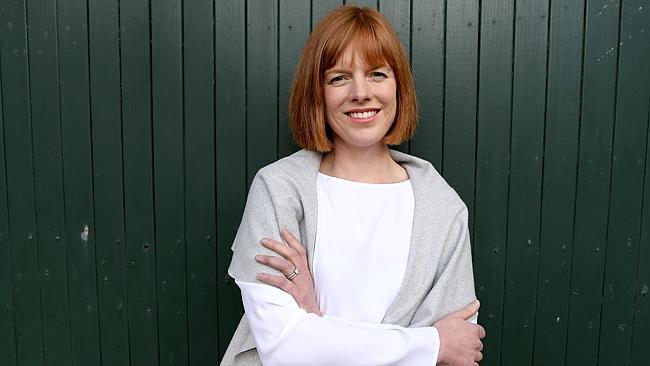Maternity leave time out turned to advantage
Lawyer Laura Carrocci spotted a gap in the market while on maternity leave.

Lawyer Laura Carrocci was midway through maternity leave when she had a light bulb moment about what she wanted to do with her life.
She loved law and had a successful career at the Office of the Director of Public Prosecutions in Adelaide and as a solicitor at Michael Woods & Co, but when she had her first child and took time out, she felt the same as many other high-powered women when stepping back from the corporate world.
“I worked 10 years in law and it was everything, and then I was at home with a baby and I had a real moment of identity crisis,” Carrocci says. “I thought, who are you when you wear all these badges?”
While women appreciate maternity leave and a break from the long hours they may work, or the stress and pressure that comes with corporate life, many struggle to cope with the absence of the adrenalin rush and their new identity as simply their baby’s mother. For a time, their lives are likely to revolve around mothers’ groups, nappies, midday sleeps and playgroups — without the recognition that came with their brain power.
Carrocci, 33, and now a mother of two girls, says while men generally have a linear career, women often have to change direction or step sideways after children to allow them to adjust to parenting.
While workplace flexibility is ensuring men can take time off for parenting duties and work hours around school pick-ups and other family responsibilities, they rarely take a six or 12-month break to look after a baby.
But Carrocci says there are benefits for many women and the time they take off can allow them to re-evaluate where their career is going. “The one benefit for me was that pause that men don’t often get,” she says.
“If you get that opportunity, it’s a time to think about who you are and what’s important to you.”
Carrocci noticed a gap in the market for women going through similar experiences and set up the Collective Organisation — a training, mentoring, recruitment, coaching and personal development company to help women define who they are in the workforce and how to find the roles want.
“I came back to what my core values were and I wanted to connect, support and develop women,” she says.
“There’s that idea of competition and coming to a place with this idea of scarcity of good roles rather than abundance. When we collaborate and work together the results are almost always more rewarding and more successful.”
Along with one-on-one consultancy and coaching, Carrocci organises a speaker series with industry leaders aimed at women. It is networking without the high price tag and without the corporate lunch culture.
The series is held in a boardroom hosted by a company that supports women’s progress, diversity and flexibility, such as KPMG, and the costs are kept to a minimum to make them accessible.
She chose after-work hours for her seminars because they can be quick and avoid a late night.
“Men do it well with the corporate lunch and opportunities to network through events,” she says. “Women are often doing great work but not necessarily getting the most out of their lunch if they go, and they can often be male-dominated.
“With a lot of women, the conversation I have is, ‘I don’t have time for that, I need to be at my desk doing my brilliant work.’ ”
There are dozens of professional networking women’s groups including Women in Business, Chief Executive Women and the Little Black Dress Group, but very few that are male only — and if there were, there no doubt would be people crying sexism.
Sydney-based Man Business set up last year and held a networking event featuring craft beers. The group was ridiculed on the Mamamia website.
One gender commentator, who does not want to be named, argues reverse sexism is alive and well. “Why is it that women can have women-only networking groups but men can’t?” she says.
Perhaps there are questions about whether men need business networking groups when most lunchtime corporate functions are already male-dominated, but the commentator agrees women often need a leg-up and should support each other given they are the minority in boardrooms and at management level.
The largest women’s networking group nationally, Business Chicks, has events including conferences, breakfasts, lunches and evening talks in every state. The organisation has 35,000 members and publishes a magazine for women at work. While it is women-only, it features male guest speakers.
One of the longest standing groups, Women’s Network Australia, has been operating for 25 years and hosts expos, online services and lunch events. WNA says there are 660,280 women running and operating businesses across Australia, with 81 per cent of those working from home while half are mothers.
Many organisations offer mentoring, whether it be the Australian Human Resources Institute, the Australian Institute of Management or other groups, and are not restricted to women. Everyone needs career advice at some stage, but women often need encouragement to ask tough questions about salary, flexibility and climbing the ladder.
Carrocci mentors, and has been hosting monthly lunches with a group of women with whom she networks — without high costs, at a casual venue, and there is no need to book a ticket. It is small scale, low pressure and social. She also runs what she calls a hybrid recruitment business that connects professional women who need flexibility with companies that value diversity and pathways to career development, while allowing people to work the hours that suit.


